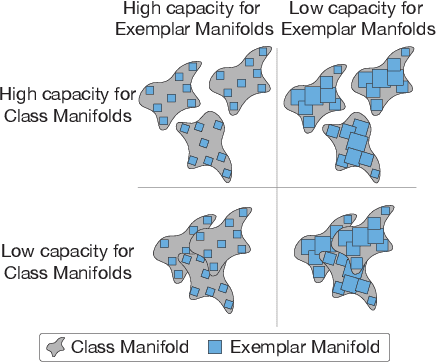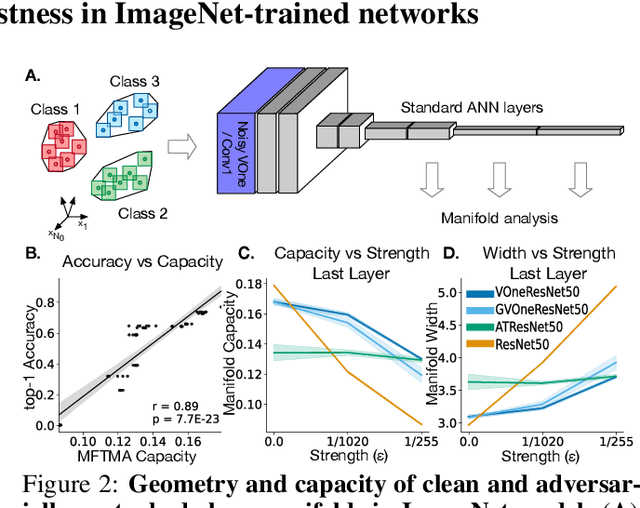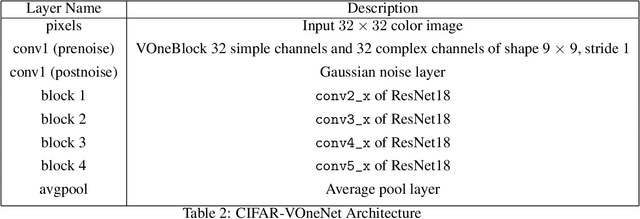Josh H. McDermott
Neural Population Geometry Reveals the Role of Stochasticity in Robust Perception
Nov 12, 2021



Abstract:Adversarial examples are often cited by neuroscientists and machine learning researchers as an example of how computational models diverge from biological sensory systems. Recent work has proposed adding biologically-inspired components to visual neural networks as a way to improve their adversarial robustness. One surprisingly effective component for reducing adversarial vulnerability is response stochasticity, like that exhibited by biological neurons. Here, using recently developed geometrical techniques from computational neuroscience, we investigate how adversarial perturbations influence the internal representations of standard, adversarially trained, and biologically-inspired stochastic networks. We find distinct geometric signatures for each type of network, revealing different mechanisms for achieving robust representations. Next, we generalize these results to the auditory domain, showing that neural stochasticity also makes auditory models more robust to adversarial perturbations. Geometric analysis of the stochastic networks reveals overlap between representations of clean and adversarially perturbed stimuli, and quantitatively demonstrates that competing geometric effects of stochasticity mediate a tradeoff between adversarial and clean performance. Our results shed light on the strategies of robust perception utilized by adversarially trained and stochastic networks, and help explain how stochasticity may be beneficial to machine and biological computation.
Learning Sight from Sound: Ambient Sound Provides Supervision for Visual Learning
Dec 20, 2017



Abstract:The sound of crashing waves, the roar of fast-moving cars -- sound conveys important information about the objects in our surroundings. In this work, we show that ambient sounds can be used as a supervisory signal for learning visual models. To demonstrate this, we train a convolutional neural network to predict a statistical summary of the sound associated with a video frame. We show that, through this process, the network learns a representation that conveys information about objects and scenes. We evaluate this representation on several recognition tasks, finding that its performance is comparable to that of other state-of-the-art unsupervised learning methods. Finally, we show through visualizations that the network learns units that are selective to objects that are often associated with characteristic sounds. This paper extends an earlier conference paper, Owens et al. 2016, with additional experiments and discussion.
Ambient Sound Provides Supervision for Visual Learning
Dec 05, 2016Abstract:The sound of crashing waves, the roar of fast-moving cars -- sound conveys important information about the objects in our surroundings. In this work, we show that ambient sounds can be used as a supervisory signal for learning visual models. To demonstrate this, we train a convolutional neural network to predict a statistical summary of the sound associated with a video frame. We show that, through this process, the network learns a representation that conveys information about objects and scenes. We evaluate this representation on several recognition tasks, finding that its performance is comparable to that of other state-of-the-art unsupervised learning methods. Finally, we show through visualizations that the network learns units that are selective to objects that are often associated with characteristic sounds.
 Add to Chrome
Add to Chrome Add to Firefox
Add to Firefox Add to Edge
Add to Edge